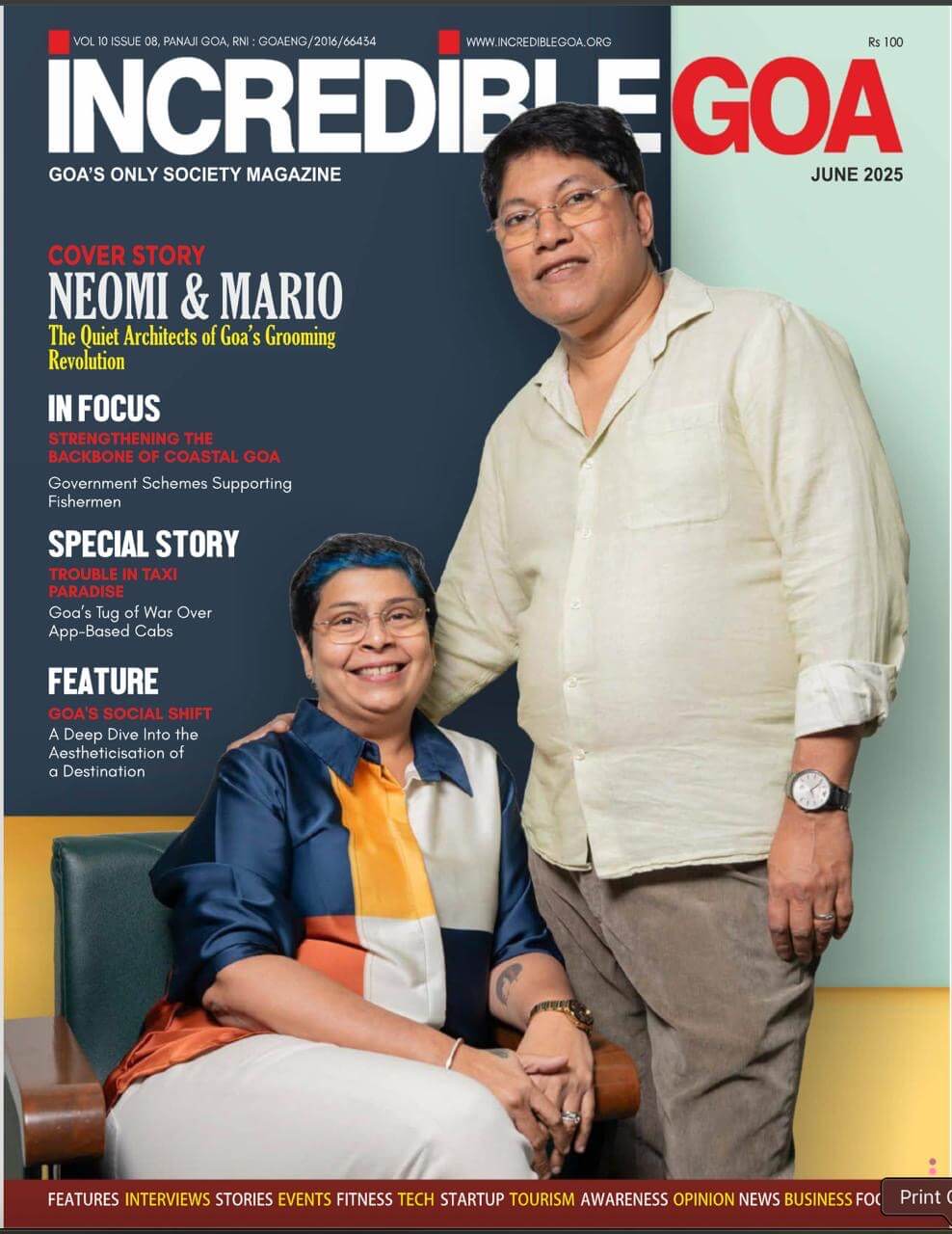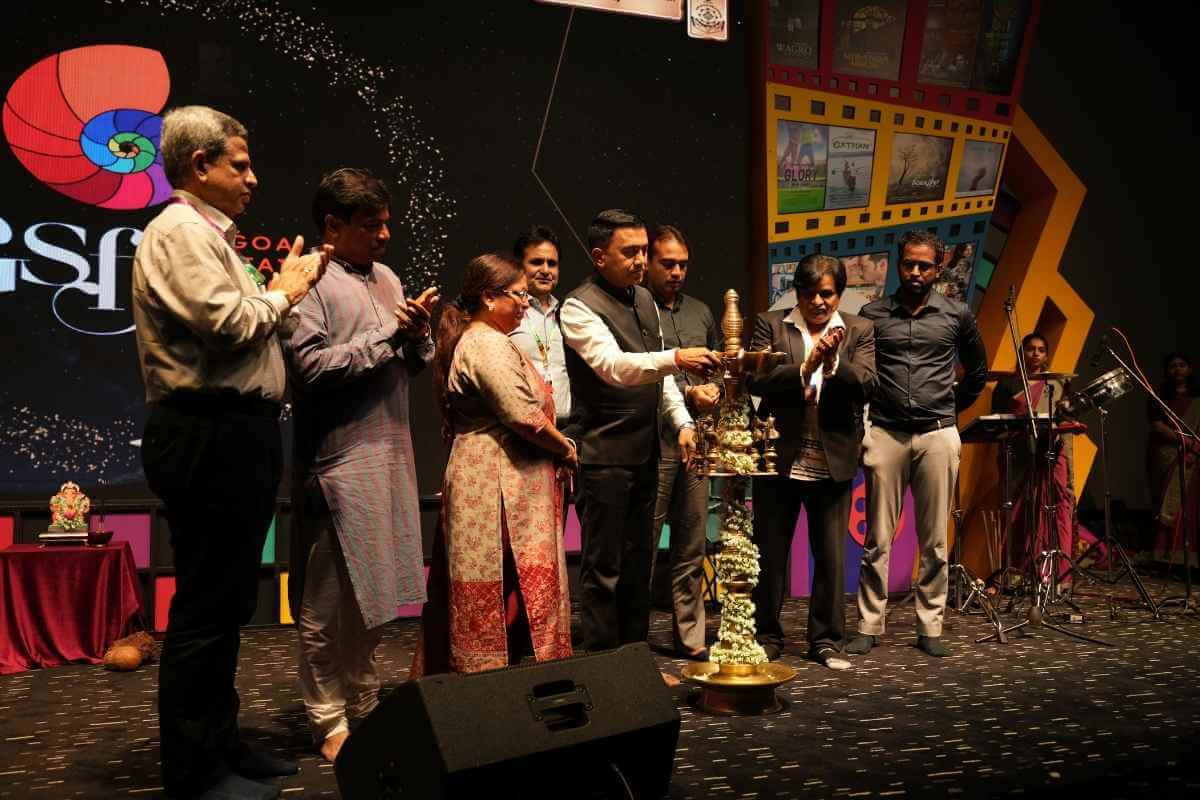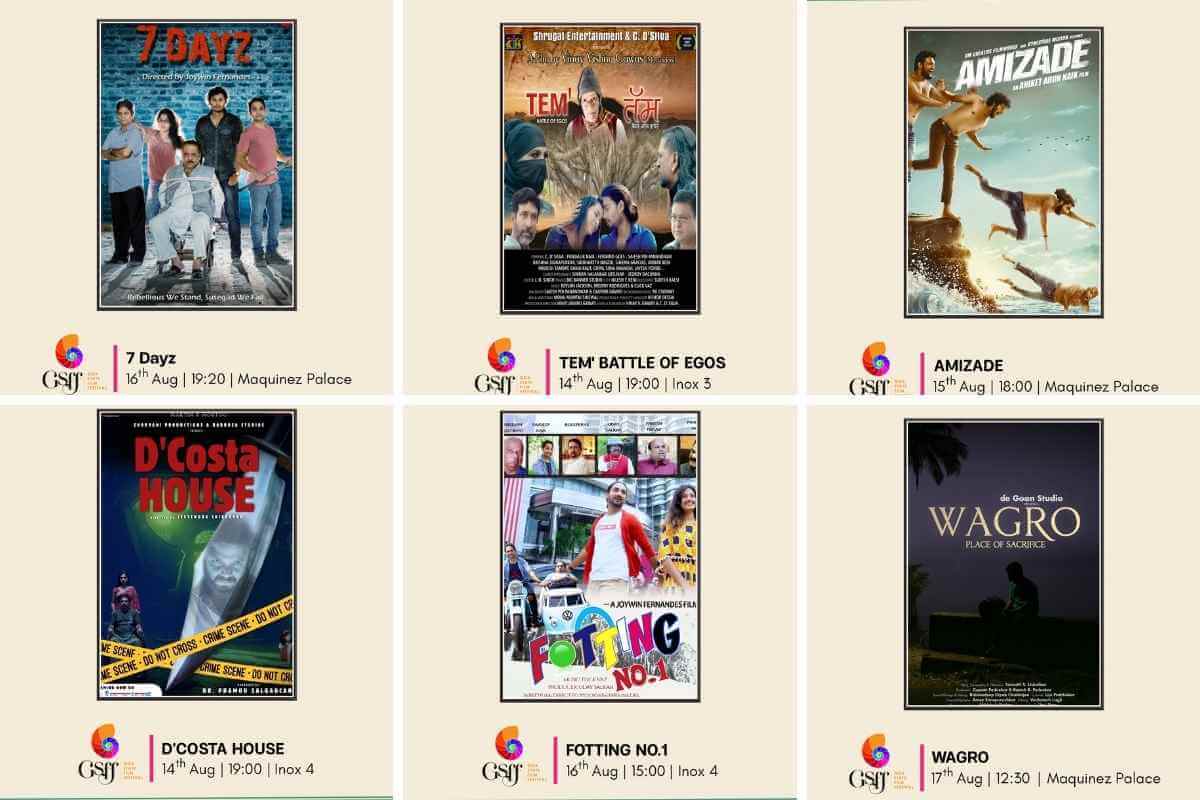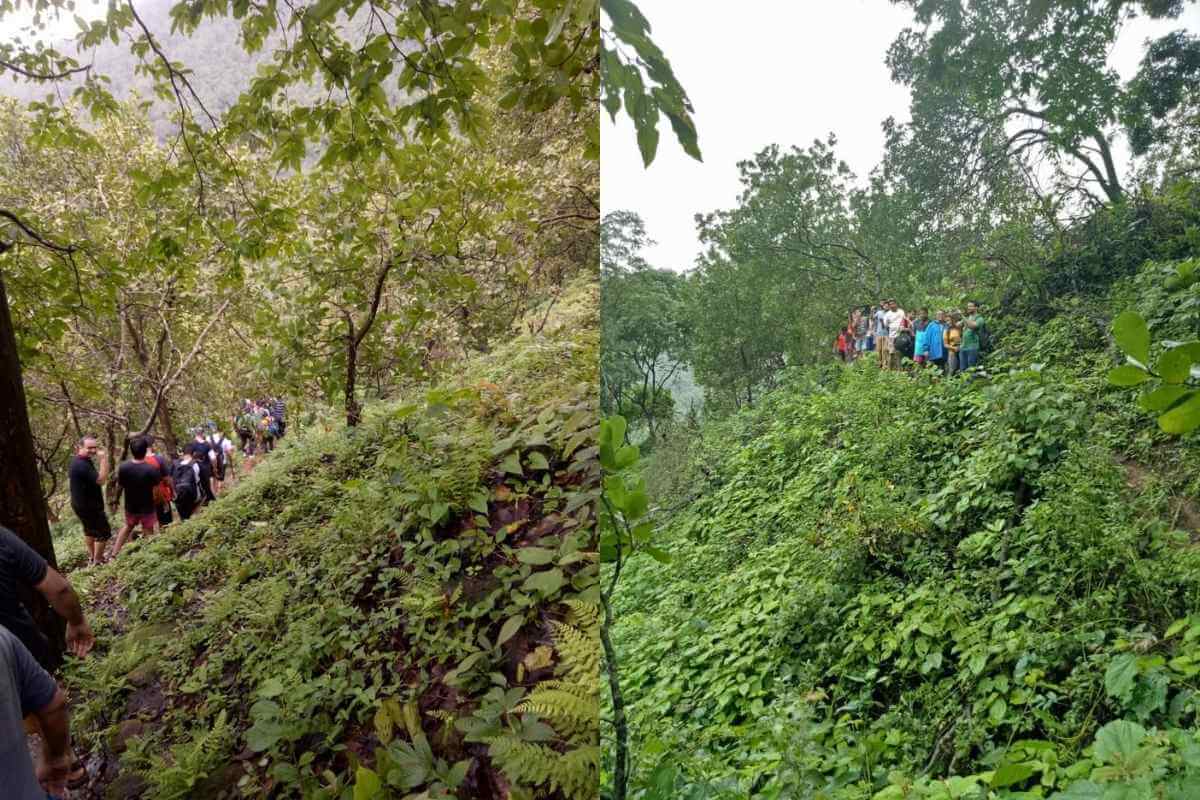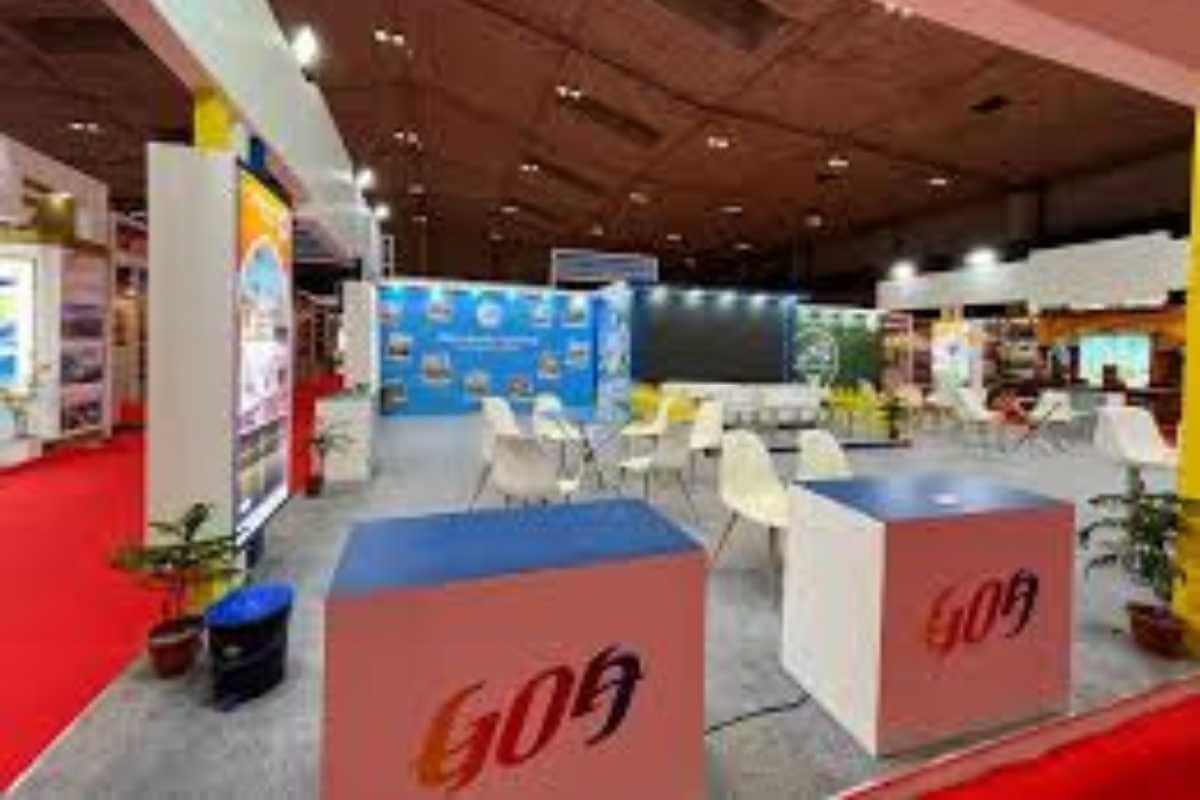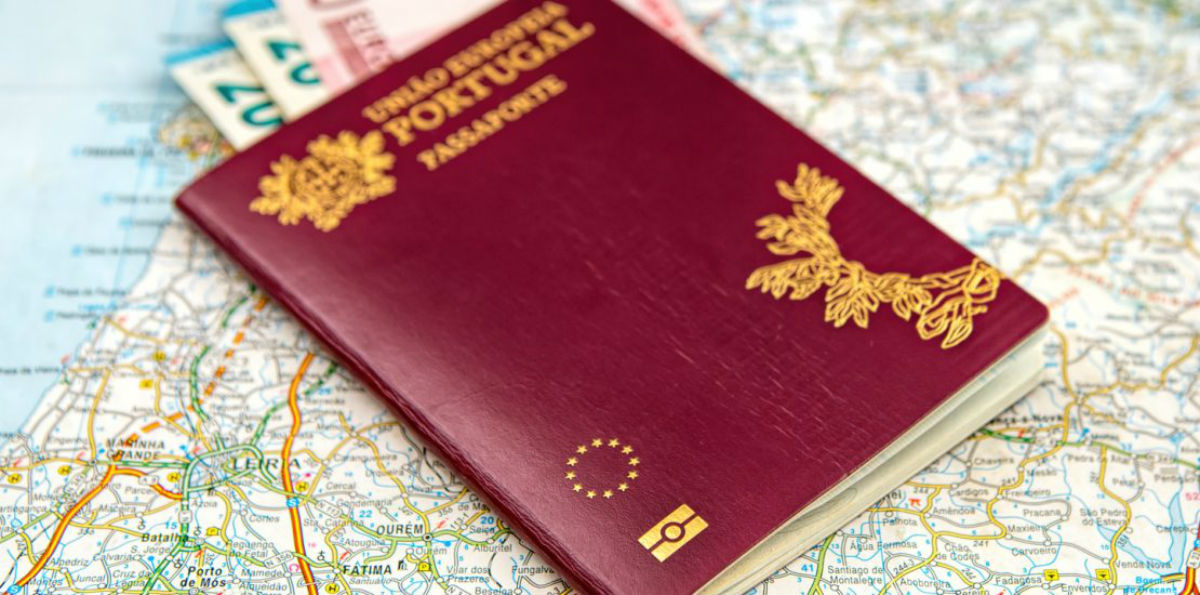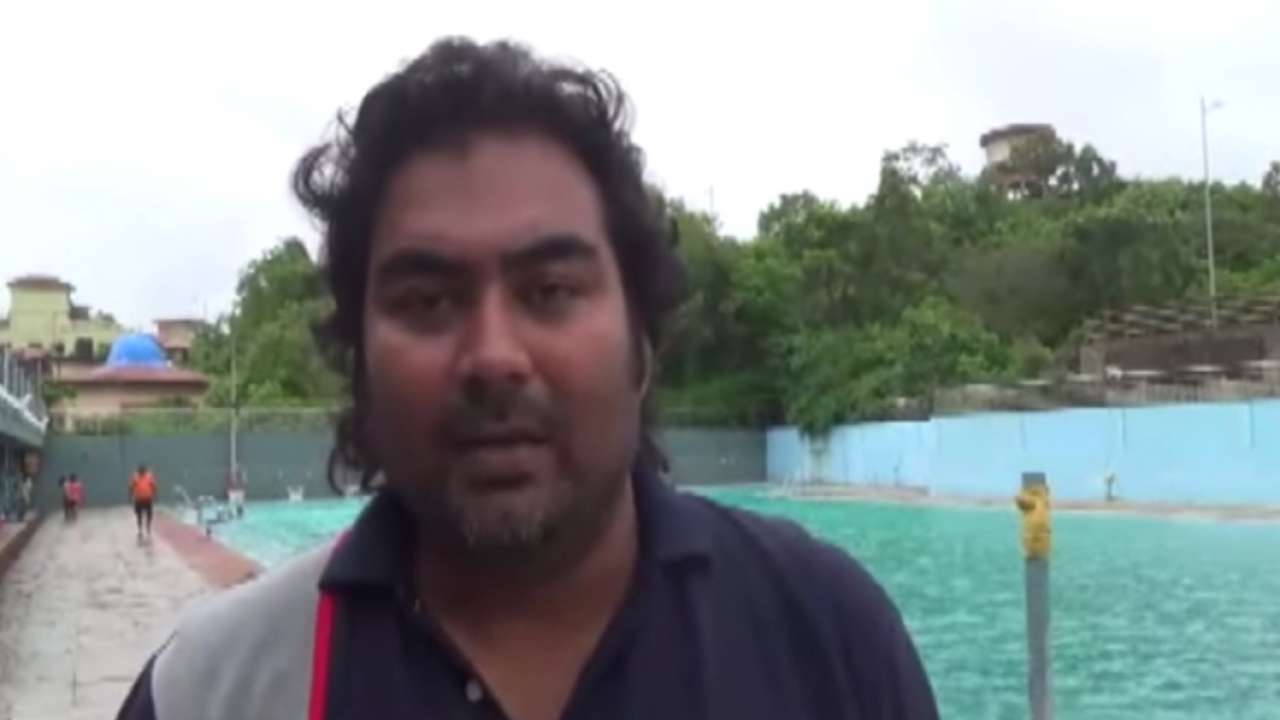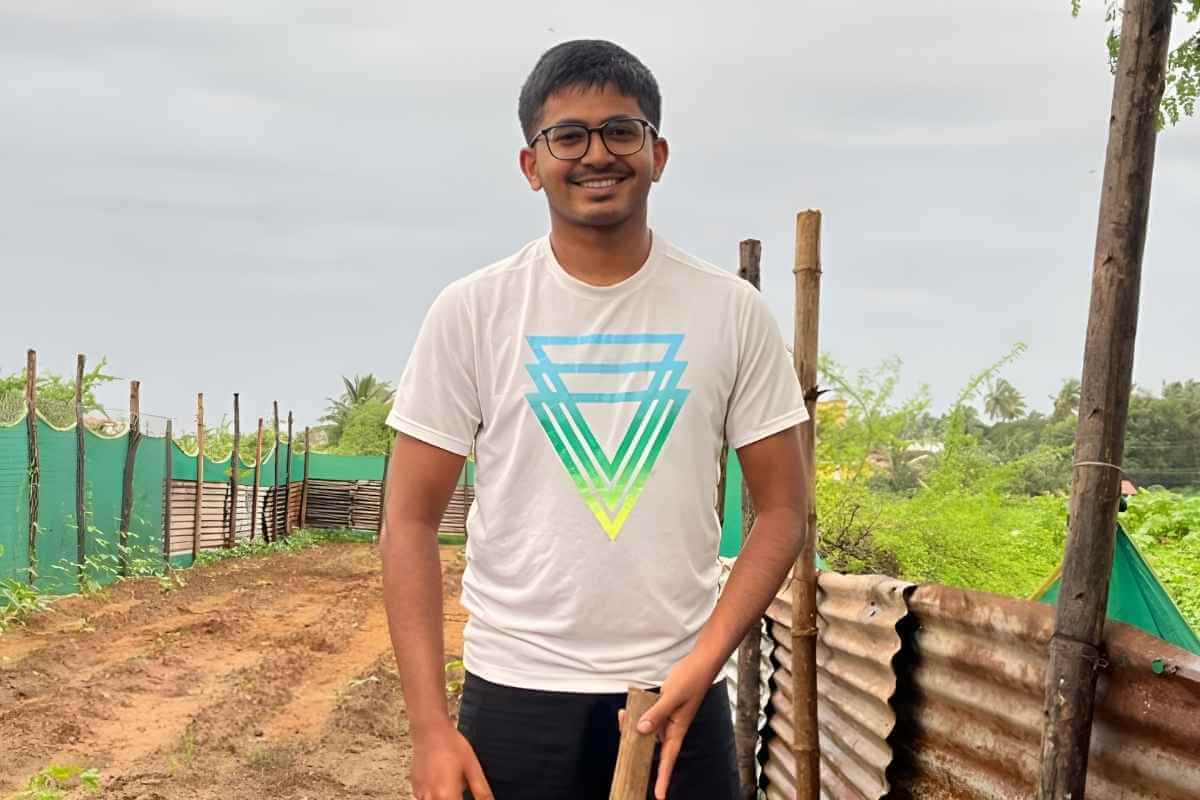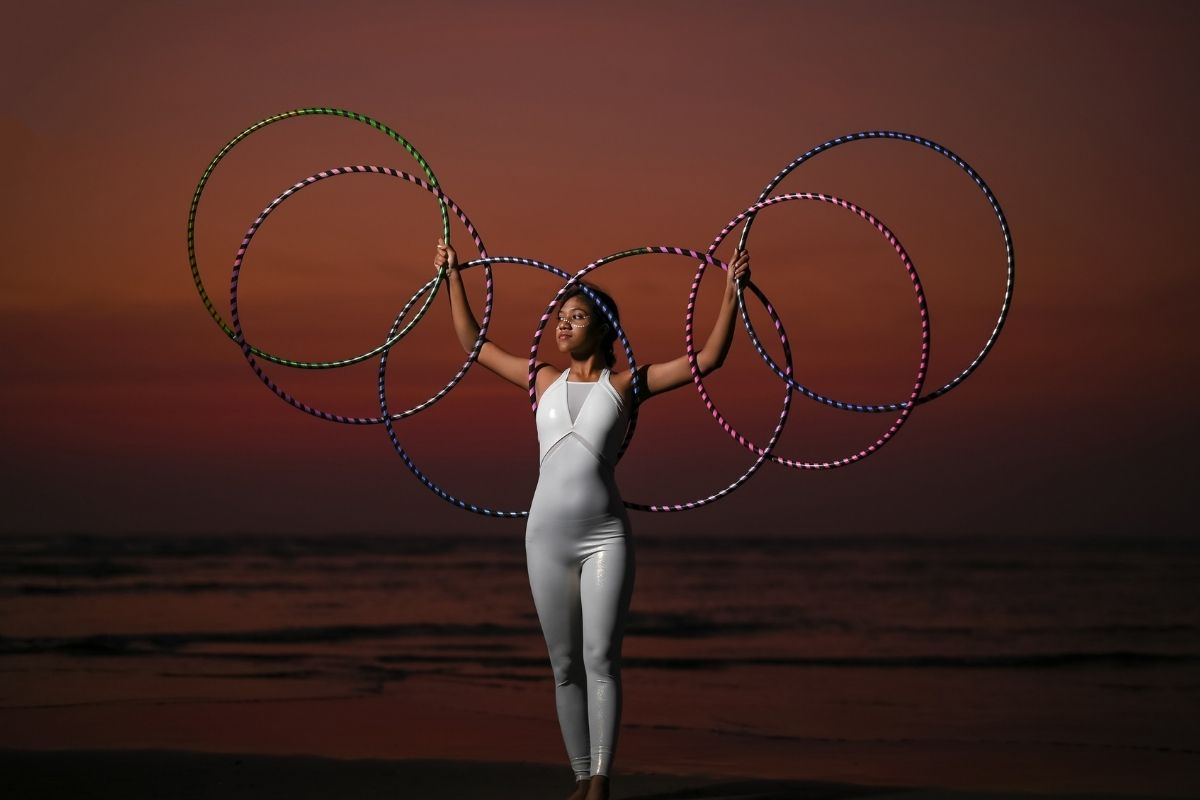I have written many inspiring stories in my short journalistic journey and have many more to look forward to in future. For me, this is a learning curve where I learn about new people and their stories and can experience things not many others can. Each and every article and story is unique and if you asked me to rank them, I’d be hard-pressed to.
Here is the story of Goa’s renowned folklorist and Padma Shri Awardee, Shri Vinayak Baab Khedekar. His is a truly inspiring story of struggle and it is a tale of persistence and dedication and of self-belief that elevated him to the position he is in today. It is a sheer example of the saying that ‘nothing in life comes easy. So, fasten your seatbelts and let me take you on another roller coaster ride …
Shri Vinayak Khedekar (whom I will address as Vinayak Kaka or just Kaka throughout the story) comes from a small village called Savoi Verem situated in the Ponda Taluka. He does not hold any institutional degree or higher education certificate but what he achieved in his lifetime is something that very few people reach. He is the author of 18 books: 14 in Marathi and 4 in English and those books are now a source of the heritage of Goa for researchers and students of literature and English.
According to Vinayak Kaka, his journey started as a priest at the tender age of 12. “Actually, I am a priest by profession,” said Kaka, adding that he learnt Sanskrit at the age of 9 when his thread ceremony was initiated. “At the age of 12, my father asked me to carry out a wedding ritual. This was a great challenge as although I was very well versed with the mantras, I had not learned the sequences- what comes first and what it should end with. In our Indian tradition and culture, a marriage ceremony is considered to be the most sacred and the process and practices change with each caste and creed. I confessed to my father my difficulties and he gave me a simple solution – he told me not to worry, that there will be a lady who is going to sing and you just need to follow her. At first, I did not understand but when I went to carry out the rituals, I realised that the lady was indeed reciting every process written in the book.”
It was a life-changing experience for Vinayak Kaka and it changed his entire perspective on Indian tradition, culture, customs and rituals. “I realised that this is something that I always wanted to do. I am not talking about carrying on with wedding rituals, but my love towards folklore,” he said. “I want to describe one small incident that I had experienced at the age of 20. I was on my way back to Goa from Karnataka after finishing a wedding when I found out that the entry gates closed at 6.30 pm I reached the Goa border by 7 pm. I was left with no option but to spend the night on the border. Someone gave me shelter in their verandah for the night and while lying down on the ground, I heard the sound of Ghumat (Ghumat is a percussion instrument of an earthen vessel having both sides open; on the bigger opening a leather monitor lizard is mounted) and out of curiosity, I went towards it to see what is going on only to find out that it was a Dahavtari folk dance performed by a tribe of that area and from here the journey of documenting of all these traditional activities had started.”
Wherever Vinayak Kaka went, he started recording every experience he came across. “I had travelled across the country as a journalist,” said Vinayak Kaka adding that he used to travel to Daman Diu which was part of Goa then. “I also used to travel to neighbouring states like Karnataka & Maharashtra during my stint as a journalist. Every place I went, I would only search for stories related to customs, culture, community and beliefs. Before joining the Kala Academy as a secretary in 1973, the only passion I had was to document each and everything that I came across in my journey.”
Vinayak Kaka has spent most of his time writing. “I used to write for newspapers and radio and I was also working as a resident reporter for the Kesari newspaper,” said Vinayak Kaka telling me that initially, he used to get Rs 15 as a retainer before becoming a permanent employee of the newspaper later on. “I had written articles on various subjects and genres and from that my career in art & culture started taking shape and that became the stepping stone for my next journey at Kala Academy as Secretary.”
“There is a very interesting story about my induction at Kala Academy as secretary. I didn’t want to apply for this role but the secretary of the Chief Minister of Goa, Bhausaheb Bandodkar, had coerced me into applying for the post. The interesting part here was the position that I was about to apply for had been graced by Shri Gopalrao Mayekar who left to join politics and later on went on to become the cabinet minister. The second person, Shri Gangadhar Mahambre who was called to Goa from Pune to take up this position, had left since he did not find any potential in the position. It was the third time the post was advertised and I had submitted my application.”
“I had submitted the application but I was aware that I do not have any formal education,” said Vinayak Kaka. He was however confident about his knowledge of art & culture which he acquired from various sources during his journey as a journalist and folklorist. “I had a vast knowledge of music, art, drama, culture & creative writing, and that helped me answer all the questions correctly surprisingly I was the only one who answered all their questions to their satisfaction. Someone was a post-grad and the other had a PhD in Art & Literature but none of them was qualified in the field of knowledge and information that I had mastered. So, while sending the file to Chief Minister, they wrote a note on it saying ‘This candidate has all the required knowledge and capabilities to hold this position but he has no formal education.’ Another thing I was falling short of was my age: I was 34 then.”
“I took over the reins of Kala Academy and started work in full swing,” said Vinayak Kaka. He was given one year to prove himself or leave the position and he accepted that challenge willingly. “I joined Kala Academy in the month of December and by June, I established Goa’s first college of music (Goa College of Music) along with Pandit Ratnakar Ramnathkar, Yashwant Kerkar and Shripad Nevrekar. During that time, Goa College of Arts was affiliated with Mumbai University. The third plan I had was to establish the School of Western Music in Goa but that, unfortunately, did not materialise.”
Vinayak Kaka relays that during his first-year tenure as a Secretary of Kala Academy he had prepared the plans for a new Kala Academy complex which is currently situated at Campal, Goa. “The Kala Academy complex was supposed to have been built where the old Mandovi Bridge is situated currently and half of the complex was supposed to be constructed inside the water but the location had changed to Campal during the process of approval from Delhi. The foundation was laid down by Shri Yashwantrao Chowhan, who was the defence minister of India during the Nehru regime. While this work was progressing, I started the ‘Lok Kala Mohotsav’ (Cultural Festival) across the state of Goa. Let me tell you that till that time, people of Goa were unaware of the term ‘Lok Kala’ and I was the first one to introduce that word in Goa.”
The activities initiated by Vinayak Kaka created awareness amongst the people of Goa about art, culture, tradition, & folk music. “Let me give you a small example of how unaware the people of Goa were during that time about their own tradition, culture and customs,” said Vinayak Kaka. He had organised a traditional ‘Talgadi’ from Canacona, especially performed by people from Canacona and the event was attended by Dr Gaonkar. , “He asked me with shock and surprise ‘Is it from Canacona?’ (He’ Kankonche?). I’ve never seen this before!” said Vinayak Kaka. He tells me of an incident when Indian Prime Minister, Pandit Jawaharlal Nehru came down to Goa and he attended the event performances comprising Corridinho (a Portuguese dance form), Fado (Portuguese Music), Mando, Dhulpad, & Dekhani (dance forms of Goa) and Fugadi. After watching all these performances, Nehru Ji said, ‘Goa ki Sanskriti aalag hai’ (Goa’s culture is different) since it has major western influences. After observing that, I realised that there is a need of bringing the art and culture of Goa into the mainstream.”
“I also remember when the Indian Prime Minister Smt Indira Gandhi Ji had visited and we were planning a cultural programme. I still recall the then Chief Secretary of Goa, Mr Srivastava, who had demanded to present a folk art performance called ‘Katti Fugadi’ during the event, to which I had disagreed saying it is not a part of our tradition & culture. However, the Chief Secretary refuted my statement and asked to keep the performance to which I said that when the performance will start, I will need permission to leave the auditorium. The CS demanded an explanation from me and I replied by saying that the ‘Prime Minister has full knowledge of Indian tradition and that if she asks me which programme this is, I won’t be able to reply to her. Finally, the CS left saying do whatever you want.”
“Kala Academy gave real purpose and I could do so many things to provide a platform for Goa’s tradition and culture,” said Vinayak Kaka. He had really struggled to get funds for the Kala Academy. “We were the last institution that was considered for the funds in any budget, and hence the only option was to get funds from the leftovers of all the departments at the end of the financial year. On the 30th of March, I used to receive a proposal of funds from various departments and my job was to take the signatures of all the ministers, including the Governor of Goa, and then submit that in time to make sure that we get the money on the 31st March. This formula helped Kala Academy to remain afloat but we never became self-reliant.”
As things started settling down at Kala Academy, Vinayak Kaka started participating in national and international conferences. “Later on, I was appointed at ICCR (the Indian Council for Cultural Relations) and here I got an opportunity to take the Indian floats to the international platforms, and it was the first time that Goan Cultural Floats had left Goa for International display.
Today, whatever schemes and programmes that Kala Academy run had been started by Vinayak Khedekar Ji. “Two things that were introduced at Kala Academy after I retired: the Nakshatra Mohotsav & Nupur Mahotsav and the other was the numbering of the events, i.e. ‘13th Kala Festival’ or ‘15th Cultural Festival’ etc. Leaving aside these introductions, Kala Academy had not implemented any new schemes to date.”
“I want to tell you about one more experience of mine while I was on a cultural trip to Rajasthan. We experienced a lot of new cultural activities that took place in that region. Here I learned that Adivasis (tribals) possess an instrument that they use to send a message from one point to another. I thought that if these tribal people have such an instrument, then Goan tribals should also possess the same. From here my search for that instrument began. But I had faced communication hurdles: let me tell you that 18 years have passed while searching for that tribal instrument and I thought I had simply failed to find it! But one day, while I was communicating with the people of Malakarnem village about the instrument that sends these messages, one of them said that he has it and it’s called “Kairi” – a folk instrument, fashioned out from the horn of the bison (Gaur) and it had to be taken out from the bison carcass within three days of its death. He showed me the instrument, but did not know how to use it and when I asked him, he said there is only one person that knows to use it. I immediately made arrangements to bring that person who showed me how it is used and I had recorded everything for documentation purposes.”
“These kinds of discoveries are very important for the purpose of information and documentation of our culture and its powerful tools. That instrument was a very powerful tool but that skill was dying and only one person was aware of it if it was not for me, these things would disappear with time. . That man showed me how to use the instrument and according to him, there were four types of information that could be passed through that instrument: the first was the announcing of a festival, second was about organising meetings, the third for hunting and fourth was about causal trails and all of these messages had different tunes and sounds emanating from that instrument.” That instrument had the capacity to broadcast messages across a 50 km area in just 5 minutes! “It was broadcast from one person to another and so on but the only thing that he refused to play was the emergency message, saying that if played, it would be a bad omen. I even offered to record the same in a closed studio but he refused to do so and one good thing that happened was that we have raised awareness of this thing.”.”
Vinayak Kaka had documented many such things that had almost vanished with time “I have written many books on these things. In my Lok Sarita book, I documented Gomant Lok Kala, which is a study of the lifestyle of the Gomantakiya (Goan) people. My next book was based on the ‘Kunbi’ (tribal) community of Goa. Another book is based on the story of a village called ‘Shiroda’ and currently, I am writing about Indian marriages, culture and customs. ” There are so many books on scientific research and technology but there is a distinct dearth of information on cultural technology. Until now, no one has done any work on this across the country and that made me want to write on the subject of ‘Traditional Knowledge & Technology’ this book includes minute detail on how people used to fetch water from wells for harvesting in Goa when pumps were non-existent, how the canoe (boats) were built, even the creation of fire when match boxes were not there. I have done a lot of work on this but it is still incomplete since I am yet to bridge the broken links that have vanished behind the curtain of time.”
Vinayak Kaka tells me that there were no machines during the olden days but they were still making use of science & technology to get the work done. “For example, the people of Goa were making use of ‘Laat’ (which is a traditional system devised to lift water out of a well or pond for the purpose of harvesting). It was not a machine but it was a pure use of technology and science. I have documented many such things in that book,” he said. “Another book, ‘Eco-Culture’ is about how our tradition and culture are connected with agriculture and the environment. “I want to explain this in the following examples: first is dealing with the tradition called ‘Kaul Prasad’ which we take from the priest of a temple to start any good work. This just happened to me while I was in Canacona one day. I saw a person approaching the priest for “Kaul Prasad’. I was watching everything and I heard the priest telling him, ‘God is really angry with you because you had cut down trees so now if you want to take the Kaul then please go and plant at least 5 trees, look after them and then come back. He did what the priest asked him and I am a witness to it. For me, this was a live example of how our tradition and culture teach us to save the environment.”
Vinayak Kaka believes that when lifestyles change it always affects culture and tradition and also our dietary habits. “The best way to keep our culture and tradition from cultural pollution is by ensuring we keep our traditional values alive. Let me explain this with an example. There are certain rituals carried out by certain communities alone but if that is made common for all people they will become more accessible to everyone. I have made it my mission to preserve culture and tradition till my last breath,” he said.
“According to me the new generation is really lucky to have become a part of the technological revolution but at the same time that should not take them away from their cultural and traditional values,” said Vinayak Kaka. Today’s generation needs to understand the meaning of cultural pollution and keep themselves away from it. “Today we see that our own cultural activities are disappearing and we are following the path of other cultures without knowing their importance of them. I am very positive that the new generation will come back to its roots: it might take a little longer but things will fall into place one day. The reason behind this is that we are moving away from our own culture and tradition because of a lack of knowledge among the systems. Society exists due to its culture and tradition and if we lose that, there won’t be a society. Before I end my conversation let me tell you that if the man left his culture and tradition then what remains will be a machine alone with no feelings and values.”
Vinayak Kaka had dedicated his entire life towards the preservation of the culture and tradition of Goa and even at 80 years old, he works day and night to complete tasks that are left undone. He is very positive that the new generation will take this Mashal (torch) ahead.










